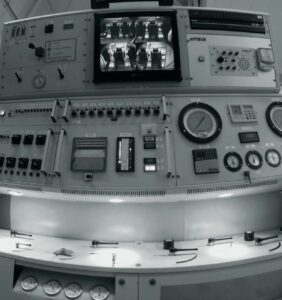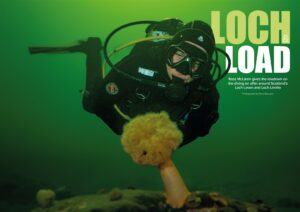The @DiversAlertNetwork team of doctors are back with advice about headaches and scuba diving.
For more help and advice, contact DAN directly.
We have been working with the team at Divers Alert Network for several years now, and over the coming months, I aim to share some of their knowledge and expertise when it comes to medical ailments and conditions and scuba diving.
In this video, I will be looking at headaches and diving.
Many divers have experienced a headache after a dive, with it eventually clearing and no lasting side effects. But when headaches are a recurring issue for divers, that’s when it becomes concerning. To help alleviate the pain and discomfort associated with constant headaches, it’s important to try and figure out a potential cause.
One way to find the cause of a headache is to run through a checklist of possible causes and eliminate them one by one. While not an exhaustive list, possible sources may include: anxiety or tension, sinus or ear barotrauma, sinus and ear infections, the common cold, saltwater aspiration, mask squeeze, dental problems, gas toxicity (especially high CO2), decompression illness (DCI), migraines, hyperextension of the neck, caffeine or other drugs.
The origins of headaches are truly diverse. However, important clues can usually be found in the history taken from someone who develops headaches regularly.
These five key questions may provide an answer to the causes of headaches:
Question 1 – Have you had previous head or neck problems, injuries or regular headaches, even when not diving?
Divers who develop headaches regularly above water are also very likely to get them underwater. Such headaches, especially if they are associated with symptoms of nausea, vomiting, abnormal sensations, vision, abnormal smell or even paralysis, may be serious and require assessment by a specialist neurologist. Migraine, a relative contraindication to scuba diving, requires expert assessment.
Headaches may also result from tension, large caffeine intake and menstrual changes, among other reasons. A bad-fitting mouthpiece can also cause headache – some regulators are quite heavy in the water and require a constant ‘bite’ to stay in place. Swapping regulators or trying different mouthpieces may spell the end of a continuous string of headaches. In the end, it is always better to own your own equipment once you have found what works for you.
Divers with previous neck or upper back problems or injuries are very prone to develop headaches underwater or even as a result of a bumpy boat trip. The underlying bony problems lead to muscle spasms, which in turn cause the headache. A medical specialist such as an orthopedic surgeon should assess these problems. Physiotherapy and muscle strengthening exercises are often of value. Some report improvement after visiting a chiropractor. Back surgery is usually a last resort.
Question 2 – What is the position of your tank on your back?
Is the diver constantly avoiding the pillar valve by bending the part of the neck closest to the shoulders downwards, and then having to hyperextend the part closest to the skull to curl around the valve? As odd as this may sound, it is a very common cause of headache in divers. The solution is to ensure that the neck, when extended normally, does not bring the head against the pillar valve by simply adjusting the position of the cylinder as needed.
Question 3 – Pain related to neck problems is usually a persisting non-throbbing pain that gradually spreads from the back of the head to the temples. Sinus pain is usually over the forehead or cheekbones or sometimes behind the eyes or on top of the head. Ear pain is mostly quite obvious, but it is always worth asking whether ear equalizing was easy and effective during a dive.
Question 4 – What is your surface air consumption?
Many divers boast about low air consumption or try to artificially reduce their air consumption by skip breathing. The truth of the matter is that removing carbon dioxide from the lungs is very analogous to rinsing dye out of a carpet. The bigger the spill (in our comparison, this would be the amount of exercise which produces more carbon dioxide) and the bigger the carpet (in our example, the size of the person’s lungs), the more water you would need to rinse it clean — that is, the more air you will require to wash the carbon dioxide out.
Larger lungs require larger breaths and consequently an increase in air consumption. That is why female divers typically have better air consumption than males. The only way to effectively reduce breathing requirements without building up carbon dioxide is to reduce underwater exercise, ensure adequate thermal protection and to relax; take slow deep breaths (better gas exchange equals good rinsing) rather than shallow ones. A healthy breathing pattern is the key to solving many headaches.
Question 5 – What was the dive profile?
Long or deep dives, rapid ascents, breath-holding and panic ascents followed by headache all raise the suspicion of DCI as a possible cause. Although fortunately uncommon, DCI is a cause that would require immediate treatment. Abnormal symptoms following any exposure to compressed air should always prompt a suspicion of DCI.
Some quick-fix solutions that may be useful include:
- Loosen your mask strap to avoid pressure on the nose, forehead or cheekbones. If necessary, change your mask to a more comfortable one.
- Relax during your dives. After all, you are on holiday.
- Take slow deep breaths. These relax you and provide a more efficient way of removing carbon dioxide.
- Relax your neck during dives. Even though it spoils your trim momentarily, rotating the body rather than the head to look at objects underwater may avoid the strain and the discomfort of hyperextending the neck.
- Stay in shape. Exercise reduces the incidence of headaches.
- Avoid caffeine and tobacco with diving.
- Always follow safe diving practices. Spend three to five minutes at a safety stop at 3-5 meters below the surface. It is relaxing (weather and conditions permitting) and allows time to reduce the carbon dioxide built up from finning to the surface.
- Wear adequate thermal protection.
- Go for regular dive medical examinations, at least every two years for those younger than 40, and annually for those older than 40. Headaches can spoil a dive trip or vacation and detract from the wonderful underwater experience.
Fortunately, once the cause has been determined, many headaches are simple to cure. Those who experience frequent, severely incapacitating or chronic headaches may require an intensive evaluation by a physician to determine the underlying problem.
Remember, it is always better to go for a check-up unless the headache is trivial or can be explained.
Got a medical query related to diving?
Leave your question below – if we or the team at DAN can’t answer, maybe someone in our community will be able to. Remember, if you enjoyed this video, be sure to subscribe to our YouTube Channel, and check out our playlist for more inspirational and educational content.
As always, stay safe – and if you are going diving soon, enjoy!
Do checkout How soon can you dive after getting a tattoo?








